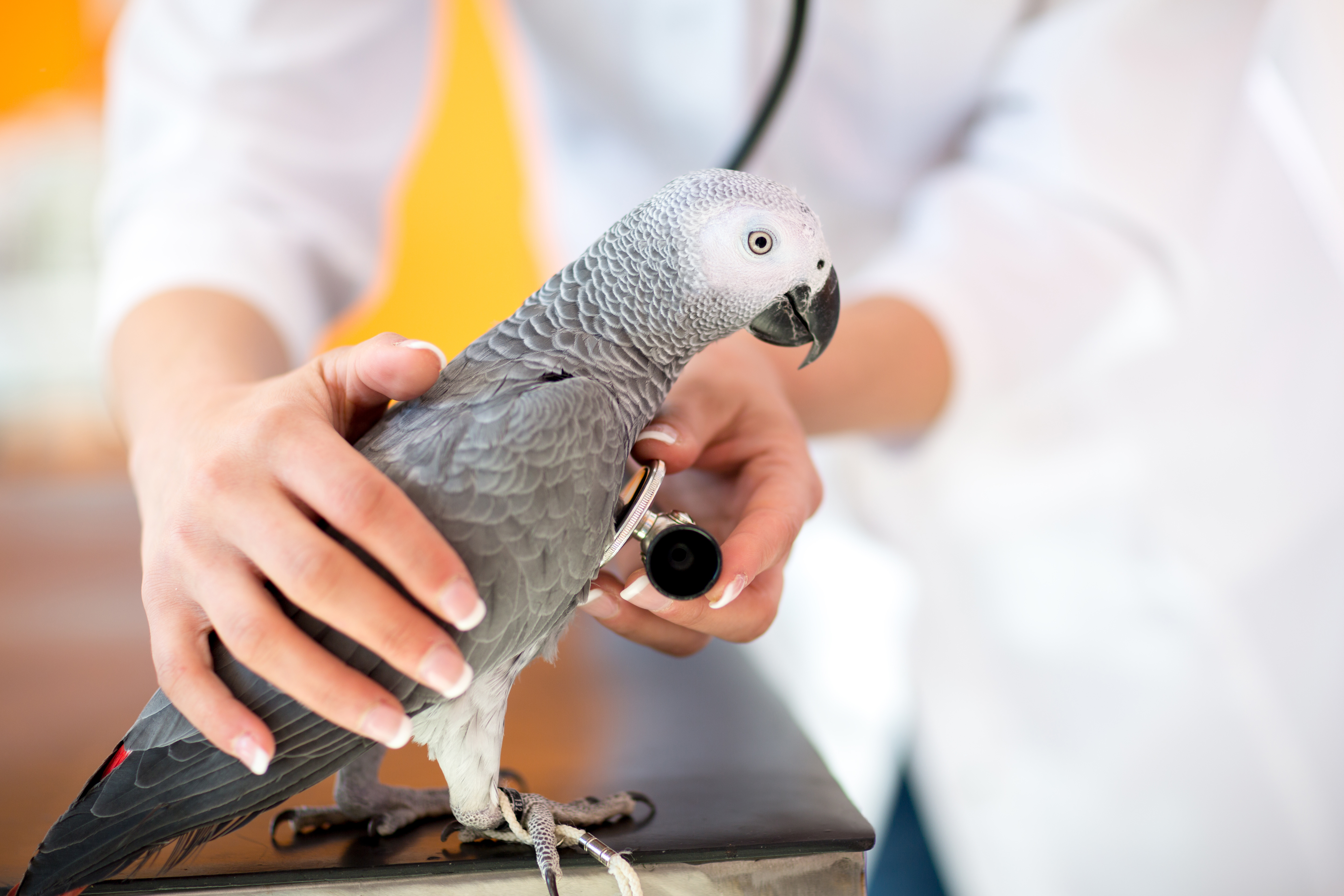Uh oh… more insurance premiums, but now for my pet?? This is how most of us feel at the thought of pet insurance. Well, I did at least.
Insurance is that cost that you see leaving your account every month, but are you using it every month? Who knows? For those of us humans, we see all different forms of insurance in our lives from health, car, travel, and house, to even the most important thing, our life. As for whether we need (or want) it, that's the question. One thing most pet owners debate with themselves is whether they should opt in for pet insurance. Is pet insurance worth the cost?
As our pets increasingly become integral members of our families, their health and well-being take priority. Today, we're diving deep into the world of pet insurance to uncover whether it's a prudent financial decision or an unnecessary expense. Our team here at Bumblbee has spent countless hours compiling the pros and cons of pet insurance to bring you the best information to guide your journey on whether pet insurance is the way to go for you. Let’s begin!
Understanding Pet Insurance: What Is It Even?
Pet insurance is designed to reduce the financial burden of veterinary care. It provides coverage for various health-related issues, much like human health insurance, but with its own set of rules, coverage options, and considerations. But the principle is simple: you pay a monthly premium, and in return, the insurance company helps cover the costs of your pet’s medical emergencies, illnesses, and with some plans, even wellness visits.
The Costs: Premiums, Deductibles, and Caps
- Premiums: These are regular payments made to maintain your insurance coverage. They can vary based on your pet's age, breed, and the specifics of your policy. For instance, breeds prone to genetic conditions may command higher premiums. For those of us who have life insurance this concept is already well known. The older you get, the riskier your profession, or even just whether you’re male or female, we see these variations in insurance price premiums.
- Deductibles: This is the amount you pay out of pocket before your insurance begins to pay. A higher deductible usually means lower monthly premiums, but more upfront costs during a veterinary visit. This definitely isn't a new concept to anyone who's had any sort of insurance for anything before.
- Coverage Caps: Insurance policies may have annual, lifetime, or per-condition caps; understanding these limits is essential to evaluating if a policy meets your needs.

What Does Pet Insurance Typically Cover?
Understanding what pet insurance actually covers is vital to determine if it makes sense for you and if you think it’s worth it. Here’s a breakdown we constructed at Bumblbee of the typical coverages for pet insurance plans. This list is compiled from various pet insurance providers to give you a full understanding of all the coverage options without having to go through various providers' pages:
- Accidents and Injuries: The obvious coverage of pet insurance is accidents and injuries. All pet insurers provide some sort of coverage for this, to what extent? Well that varies on the provider and the plan you choose.
- Emergency care: Emergency care has rated the number one reason people are choosing to get pet insurance, and I’m not surprised by this at all. Needing emergency care is not only a stressful experience but also a costly one, I know from personal experience. Last year my three-year-old golden retriever, Murphy, caught his nail on our morning walk and ended up needing emergency care. Not only was it a bloody stressful mess, but it was also an expensive one. Murphy is the first dog I’ve owned myself, and I remember my parents nagging me to get pet insurance for him when I first got him, and god how thankful I was for them doing that, even if it was annoying at the time.
- Surgeries: Surgeries, in most cases, are the most expensive pet care aspect, and with the cost of them, how could they not be? Every pet care provider offers some sort of coverage for surgeries, but these coverages vary so it is very important to choose the right fit.
- Treatments: Some packages cover treatments for pre- or post-accident care such as injuries from falls or car accidents. Different packages cover various extents of treatments.
- Illnesses: Treatments for illnesses like cancer, diabetes, and infectious diseases. This is important to consider if you have a breed that is prone to any sort of illnesses.
- Chronic Conditions: Ongoing treatments for chronic ailments like arthritis or heart disease. Many dog breeds are prone to chronic conditions such as cancer, allergies, and diabetes.
- Wellness Care (Optional): Some policies include vaccinations, routine check-ups, and preventive treatments. This was a big deciding factor for me when choosing a pet insurance provider, as my dog Murphy, being a golden, is prone to hip problems, along with many other large breed dogs. Given this, I opted for a pet insurance plan that could cover treatments to prevent this later in his life and also pay for anything he might need when the time comes.
- Hereditary and Congenital Conditions: Conditions your pet is born with, which some premium policies cover. This is a harder aspect of pet insurance to navigate as it’s so niche for each pet but definitely an important consideration when choosing the perfect plan for your specific needs.
Coverage details can vary significantly between policies, so it’s vital to read the terms carefully and choose a plan that caters to your individual needs. Next, we are going to dive into the financial aspects of pet insurance and analyze the various costs of it.
Analyzing the Costs of Pet Insurance
When looking through the cost of pet insurance, you will see it varies depending on several factors. These include:
- Species and Breed: Dogs are generally more expensive to insure than cats, no surprise here as dogs are just more expensive in all aspects than cats. Some breeds that are prone to genetic disorders may also face higher premiums such as the French and English bulldog.
- Age: Older animals are more costly to insure as they typically face more health issues, this greatly affects the cost of pet insurance and can change as the dog ages. Definitely an important consideration when choosing an insurer as you don't want to get ripped off and have to pay way more as the natural course of your dog's life plays out. Look for details on this in the coverage package and make sure you are clear on this before committing to anything.
- Location: Veterinary costs vary by region as do with medical care for humans. This can substantially influence insurance premiums that you will pay. Pet insurance is personalized to your location by the average price of veterinary care in that area.
- Level of Coverage: Comprehensive plans cost more but obviously they cover more also. The level of coverage one will need is personalized to them, when choosing how much coverage you will want and need. Some plans cover things such as wellness visits and routine check-ups.
Monthly premiums can range from as low as $10 to over $100. However, when considering these costs, it’s essential to also consider potential veterinary expenses without insurance, such as what your plan won’t cover. Now let’s move on to the pros of pet insurance by discussing the benefits.

Benefits of Pet Insurance
Financial Planning
The most significant advantage of pet insurance is financial predictability. Veterinary emergencies can cost thousands of dollars, and high-quality treatment for chronic conditions can add up over a pet's lifetime. Pet insurance can mitigate these costs, making them more manageable over time.
Access to Care
With financial support from insurance, pet owners can afford better and timely medical care, potentially extending the life and well-being of their pets. Access to care when and where you need it is vital and with pet insurance, you can have the peace of mind knowing you will be able to provide the care you need no matter what. Giving you the best peace of mind in case of life's unexpected turns.
Peace of Mind
Knowing you have financial backing in case of unexpected health issues can provide peace of mind, which is invaluable. Not having to worry about the "what-ifs" because you know if those "what-ifs" happen, you are covered. Pet insurance gives the same peace of mind as a rainy day; you hope you won't have to use it, but you can rest assured it is there if you do need to.
Now we are going to dive into some real-life stories from people like you and me—pet owners. These stories have been sent into us at Bumblbee from readers like you.

Is It Worth It? Scenarios to Consider
Let’s explore some real-life scenarios to better understand the value of pet insurance:
- Emergency Surgeries: If your pet suddenly needs emergency surgery, such as for a foreign object ingestion, the cost can easily exceed $3,000. With pet insurance, you could be reimbursed for a substantial portion of these expenses, depending on your coverage.
- Chronic Conditions: Conditions like diabetes or thyroid issues can require lifelong management, including regular vet visits and medications. Over time, these costs add up, making insurance a potentially smart choice.
- Breed-Specific Issues: Certain breeds are prone to specific health issues, like hip dysplasia in German Shepherds or respiratory problems in Bulldogs. For such breeds, having insurance can be particularly beneficial.
Real-Life Stories from Pet Owners like You
Case Study 1:
My dog Peaches is a Labrador retriever, I had had her for five years when this event took place, and I got her when she was one and a half years old. Peaches was born and bred to be a service dog but failed out of the program early on from some behavioral issues. I figured since Labradors are typically well-bred dogs with little common chronic illness that we didn't need pet insurance. I also thought that since she came from a reputable breeder we were good. Boy was I wrong…
One morning I woke up to take Peaches on her morning walk before I left for work. She was refusing to get up which is extremely unlike her, normally she is beating me to the door eager to go outside, so I instantly knew something was seriously wrong. I immediately rushed Peaches to the vet for emergency care. When we got there the vet took her in and my heart sank. I remember running through my brain trying to think of anything it could be, did she get into anything? No. Racking through my brain trying to think of any and all of the possibilities it could be and I came to no conclusion. When this hit me I instantly started thinking the worst…
It felt like hours before the vet came to talk to me about what was wrong with my sweet girl. The vet told me that Peaches suffered a sudden case of gastric torsion and was going to need immediate surgery if she was going to have any chance of living.
The vet assured me that it wasn’t my fault this happened to Peaches and explained that the condition occurs when a dog's stomach fills with either gas, food, or fluid and subsequently twists. The condition develops without warning and can progress quickly. It is always an emergency with this and is quite common in larger dogs.
The vet explained that the surgery is required to untwist the stomach and return it to its appropriate position. The surgery also allows them to assess the amount of damage caused by the lack of blood flow due to the twisted stomach and if there is any tissue that is damaged it will be removed.
The vet assured me that all was looking up for Peaches but I was lucky I came in when I did and didn’t sit on it for a bit thinking it would just go away. I felt so much relief knowing my sweet girl was hopefully going to be okay and knowing it wasn't my fault. But my relief didn't last long when the vet began to talk about how much emergency surgery was going to run me back…
The total cost of her surgery and post-operative care was approximately $4,000. I'm not struggling by any means but for real who has that kind of money just lying around. I had no one to blame for the incident as it can happen to any dog, at any time. I obviously had to pay for the surgery as I was in no way prepared to let Peaches go, but boy oh boy did that set me back.
Now this took place nearly ten years ago and my sweet Peaches have since gone to a better place. But you better believe I didn't skip out on pet insurance on my next dog Stan. Even though Stan is a Labrador retriever from the same reputable breeder, I now know this only goes so far as like with anything in life there are always going to be unexpected turns. I now know with my pet insurance that if a circumstance such as this comes up with Stan I will be covered and not have to miss out on my vacations for the next three years.
Case Study 2:
I adopted Whiskers, a spirited Siamese cat, when she was just a kitten. Over the years, she became more than a pet; she was a member of the family. At the time of this incident, Whiskers was seven years old, and like many pet owners, I had opted out of pet insurance. I believed her indoor lifestyle and Siamese breed—known for their robust health and longevity—minimized her risk of major health issues. That decision seemed prudent until one evening changed everything.
It was a regular Thursday evening when I noticed Whiskers acting unusually lethargic. Typically, she would be perched at the window or playfully swatting at her toys. Instead, she was curled up in a corner, uninterested in her dinner or surroundings. Concerned, I watched her throughout the night, hoping she would improve by morning. However, by dawn, her condition had worsened, and she seemed in pain when I gently picked her up.
Rushing her to the vet, I was fraught with worry, trying to piece together what could be wrong. The vet performed immediate tests and diagnosed Whiskers with acute renal failure—a condition I hadn't even considered, given her breed and indoor environment. The vet explained that even with the best care, certain conditions could arise unexpectedly and were sometimes genetically predisposed.
Treatment required several days of hospitalization, IV fluids, and ongoing medication. The costs began to add up quickly. By the end of her treatment, the bills totaled over $3,000. This unexpected financial burden was daunting. I found myself rearranging my budget, cutting down on non-essential expenses, and even delaying a major car repair to afford her care.
Whiskers pulled through after her intensive treatment, and her brush with illness was a wake-up call for me. The experience taught me that no matter how well you know your pet or how controlled their environment is, unexpected health issues can still arise. After this incident, I immediately secured pet insurance for Whiskers. Although she lived many more healthy years, the peace of mind that came with her insurance was invaluable. It turned potential future emergencies from major crises into manageable situations.
Looking back, I learned a hard lesson about the value of preparedness. I could no longer rely on assumptions about health based on breed or living conditions alone. With her insurance in place, I knew I was better prepared for whatever lay ahead, ensuring Whiskers could receive the best care possible without the same financial stress.
Case Study 3:
Bailey came into my life as a sprightly Border Collie puppy, full of energy and intelligence. Known for their agility and health, I was confident in Bailey’s physical prowess, but I opted for pet insurance as a precaution after learning from other pet owners’ experiences.
When Bailey was three years old, he injured his leg during one of our regular visits to the park. He was chasing a frisbee, a common activity we enjoyed together, when he landed awkwardly and yelped in pain. Seeing him limp was heartbreaking, and I immediately took him to the vet. The diagnosis was a torn ligament in his hind leg—a common but serious injury in active dogs.
Surgery was the recommended treatment to ensure Bailey could walk and run properly in the future. The procedure involved a TPLO (tibial-plateau-leveling osteotomy), which, while highly effective, came with a hefty price tag. Without insurance, the surgery and subsequent physical therapy could have easily cost over $5,000.
Thanks to our pet insurance policy, which covered 90% of the cost after a deductible, my financial burden was significantly reduced. The out-of-pocket expense was manageable, and I could focus on Bailey's recovery rather than worrying about the financial implications.
Bailey’s surgery was a success, and after several weeks of physical therapy, he was back to his lively self, running and playing as if nothing had ever happened. The insurance also covered his rehabilitation, including several sessions of hydrotherapy, which were crucial for his recovery.
Reflecting on this experience, I am immensely grateful for the decision to get pet insurance. It not only provided financial relief but also allowed Bailey to receive the best possible care without delay. This incident reinforced the value of pet insurance in managing unexpected health issues. Bailey’s story is a testament to being prepared for the twists and turns of a pet’s life, ensuring they bounce back with resilience while keeping financial stress at bay.

Choosing the Right Pet Insurance
Here are some tips to help you choose the best insurance for your pet:
- Compare Plans: Research and compare different insurance plans and providers, look for coverage details, exclusions. Make a list of your needs and wants and go through various providers and check do a process of elimination on which providers can meet your expectations and which won't. Once you have your list, move on to the second step.
- Look at customer reviews: These say a lot. Read through reviews for the companies you are considering and continue the process of elimination. One bad review can be just that, one bad review, but a whole page of unhappy customers and that says a lot, you’ll be one of them too. So make sure to choose a provider that has good reviews so you aren’t in for any surprises. The last thing you want is to be stressed out just trying to get the insurance in an already stressful time. Insurance is supposed to make your life less stressful, not more, so make sure to choose a provider who will do that for you.
- Understand the Policy: Know what’s covered and what’s not. Pay attention to specifics like deductibles, co-pays, and coverage limits. Don’t be afraid to call a representative from the company and have a one-on-one conversation about the depth of the package. They will be able to clarify any concerns and make sure you know what you need to before committing to anything. They can also help you make sure you choose the right package for your needs. In addition to this, calling someone from the company will give you a sense of how the company operates with customer service. If the representative is mean, incompetent, or slow, you will likely receive the same kind of service when you are in need of it. Make sure the pet insurance company you go with has a good communication reputation and is timely not making you wait.
- Consider Your Pet’s Needs: Pet insurance can now be very personalized with all the various packages and add-ons companies are now doing. Start by evaluating your pet’s current health as well as potential future needs. This can guide you in choosing the right level of coverage.
- Check for Multi-Pet Discounts: Some providers offer discounts if you insure more than one pet, this is a game changer for those of us with multiple fur babies. Insuring more than one pet can be more cost-effective and benefit you in the long run. Definitely consider this option when choosing pet insurance.

Is Pet Insurance Right for You?
Deciding on pet insurance depends on various personal factors like your financial situation, your pet's age and breed, and your tolerance for risk. Each of these factors will be different for each person. While it can be a significant expense, the right policy can save you money and stress in the long run. Better safe than sorry is my motto.
Ultimately, whether pet insurance is worth the cost depends on your financial situation, your pet's health, and your personal preferences. While it adds to your monthly expenses, it also provides a safety net that can make managing unexpected veterinary costs much easier, ensuring that your furry, feathered, or scaly friend receives the care they deserve without placing undue financial strain on your shoulders.
As always, we're here to help you navigate the joys and challenges of pet ownership. Stay tuned for more insights, and don't hesitate to reach out with your stories and questions about your pets' health and happiness!

_820610a4.jpg)
_50a85c58.jpg)








